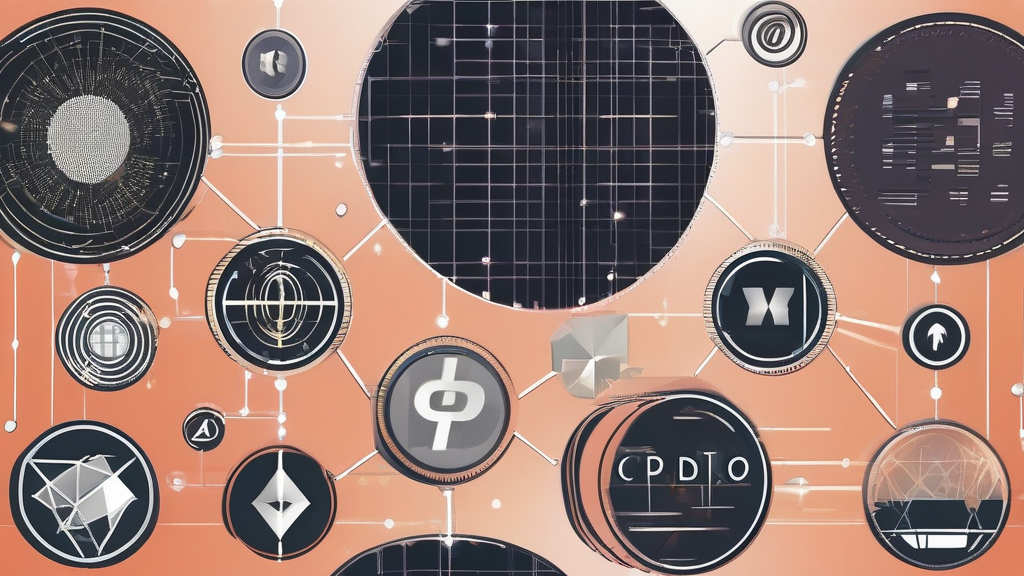Crypto tokenomics—a mix of “token” and “economics,”—covers all the elements that affect cryptocurrency value. As you might expect, this includes the maximum token supply, how new tokens are issued or deleted, token holder incentives, and the project’s utility.
Tokenomics basically describes a crypto token’s economics. You analyze tokenomics to determine a crypto’s worth and whether it will rise or decline.
Crypto tokenomics explained
Before diving into crypto tokenomics, it’s important to give a quick rundown of what crypto tokens are. Digital currency known as crypto tokens functions on a blockchain, which is a public record of transactions. The blockchain is a distributed ledger that verifies all transactions through a network of devices.
Since the characteristics and functionality of a crypto token are decided by its creators, they are also the ones who decide its tokenomics. While the term “tokenomics” can mean several things, the most common ones include a crypto token’s:
• Maximum supply
• Minting or burning process
• Transaction fees
• Incentives for token holders
How crypto tokenomics works
Despite the fact the fact that crypto-tokenomics can be characterized by many aspects, the main issue is whether a token will lead to inflation or deflation. If its supply increases over time, a token is referred to as inflationary in the cryptocurrency market, and if the opposite is true, it is referred to as deflationary.
For example, Bitcoin is theoretically an inflationary currency. The supply will keep on increasing until it hits 21 million, which is the maximum. At the moment, the supply is approximately 19 million. Ethereum can be created without limits, making it an inflationary currency. In contrast, BNB is deflationary as its development team reduces the supply and removes tokens from circulation.
Supply management of cryptocurrencies is the next part of tokenomics. Once the transactions of a cryptocurrency are confirmed, new coins are released into the system. The quantity is raised, and the contributors are encouraged to contribute since they are paid tokens for validating transactions.
Token burning, the main feature of deflationary cryptocurrencies, is the means of removing them from circulation. Some of them burn a share of the fees that users pay for transactions, while others tax all transactions and burn a piece of that as well. When sent to a burn wallet, an off-limit wallet address, tokens are permanently burned.
Factors included in crypto tokenomics
Although the structure of crypto tokenomics can vary, there are some constants to keep in mind. In order to make an informed decision about your cryptocurrency investment, you should constantly keep the following tokenomics considerations in mind:In order to make an informed decision about your cryptocurrency investment, you should constantly keep the following tokenomics considerations in mind:
The maximum supply of a cryptocurrency is an important factor to consider in determining its potential price, which is the total number of tokens in circulation. A token with a maximum supply of 1 quadrillion tokens will go to $0.01, and that is close to zero because it will be $10 trillion.
The way the creators of a cryptocurrency originally distributed the tokens is called token distribution. Projects that resulted in an initial coin offering (ICO) becoming successful are quite common, but those in which the founders or pre-launch investors received a vast share of the supply must be noted cautiously.
The mint/burn schedule is the plan for the creation or destruction of tokens from circulation. Cryptocurrencies that are inflationary in nature typically mint a certain number of tokens per block and add transactions to them at regular intervals. Deflationary coins in place may have a burn schedule or a percentage of every transaction.
Utility in cryptocurrency describes the purpose or issues that it tries to solve. The primary use of a cryptocurrency is its utility. If the only option for the project is to create memes or pump up the price, then avoid it at all costs.
P.S This is not an investment advice


